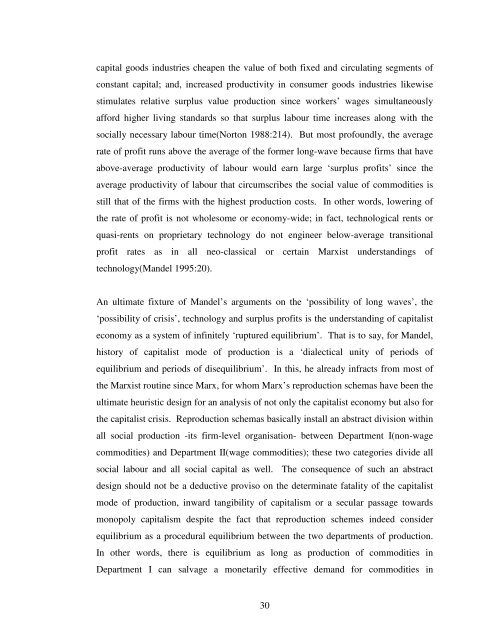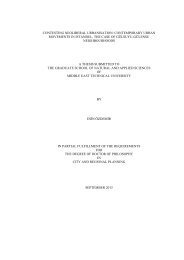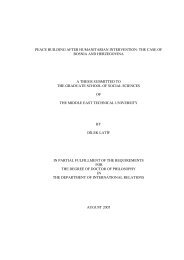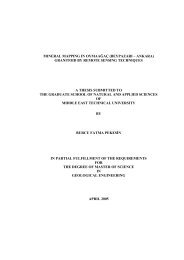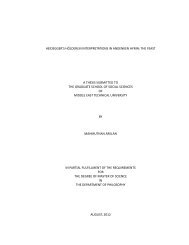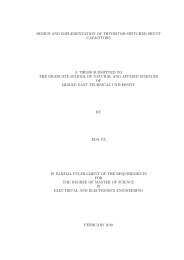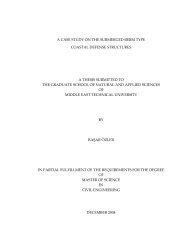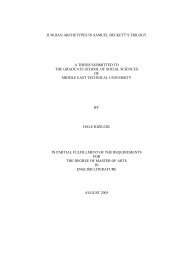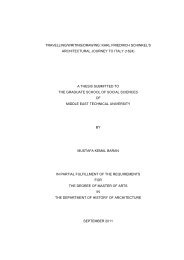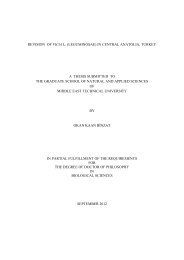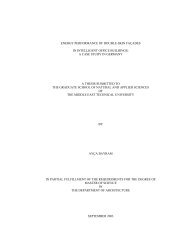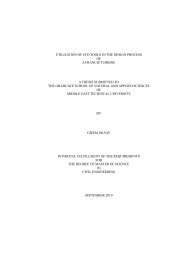View Original - Middle East Technical University
View Original - Middle East Technical University
View Original - Middle East Technical University
You also want an ePaper? Increase the reach of your titles
YUMPU automatically turns print PDFs into web optimized ePapers that Google loves.
capital goods industries cheapen the value of both fixed and circulating segments of<br />
constant capital; and, increased productivity in consumer goods industries likewise<br />
stimulates relative surplus value production since workers’ wages simultaneously<br />
afford higher living standards so that surplus labour time increases along with the<br />
socially necessary labour time(Norton 1988:214). But most profoundly, the average<br />
rate of profit runs above the average of the former long-wave because firms that have<br />
above-average productivity of labour would earn large ‘surplus profits’ since the<br />
average productivity of labour that circumscribes the social value of commodities is<br />
still that of the firms with the highest production costs. In other words, lowering of<br />
the rate of profit is not wholesome or economy-wide; in fact, technological rents or<br />
quasi-rents on proprietary technology do not engineer below-average transitional<br />
profit rates as in all neo-classical or certain Marxist understandings of<br />
technology(Mandel 1995:20).<br />
An ultimate fixture of Mandel’s arguments on the ‘possibility of long waves’, the<br />
‘possibility of crisis’, technology and surplus profits is the understanding of capitalist<br />
economy as a system of infinitely ‘ruptured equilibrium’. That is to say, for Mandel,<br />
history of capitalist mode of production is a ‘dialectical unity of periods of<br />
equilibrium and periods of disequilibrium’. In this, he already infracts from most of<br />
the Marxist routine since Marx, for whom Marx’s reproduction schemas have been the<br />
ultimate heuristic design for an analysis of not only the capitalist economy but also for<br />
the capitalist crisis. Reproduction schemas basically install an abstract division within<br />
all social production -its firm-level organisation- between Department I(non-wage<br />
commodities) and Department II(wage commodities); these two categories divide all<br />
social labour and all social capital as well. The consequence of such an abstract<br />
design should not be a deductive proviso on the determinate fatality of the capitalist<br />
mode of production, inward tangibility of capitalism or a secular passage towards<br />
monopoly capitalism despite the fact that reproduction schemes indeed consider<br />
equilibrium as a procedural equilibrium between the two departments of production.<br />
In other words, there is equilibrium as long as production of commodities in<br />
Department I can salvage a monetarily effective demand for commodities in<br />
30


